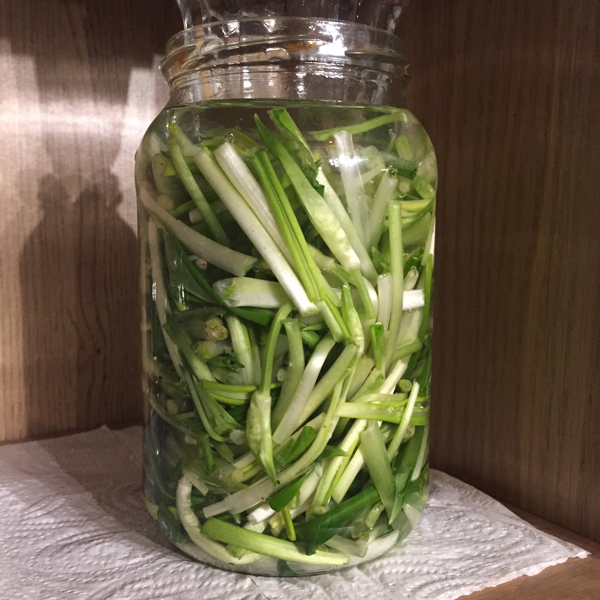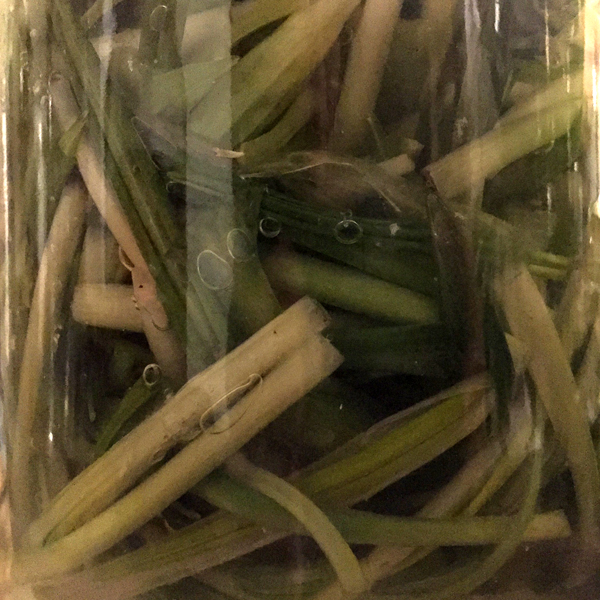The bright green shoots of wild garlic are one of the most heart-lifting aspects of an early Spring. I eat it fresh, in salads, in cooked dishes, as pesto, or soup. By the summer, it is gone again. I love having wild garlic later in the year but I can’t dry it like most other plants, as it loses it flavour and those ethereal sulphur tones! Freezing it in bags just leaves a defrosted slightly slimy mess. So I have a couple of options: making a wild garlic pesto or fermenting the wild garlic.

Fermented Wild Garlic
There are different methods.Some people like to add salt to their vegetables, crush them and allow their own juices to do all the fermenting. I am often short for time, or tired at the end of a day’s foraging and just want to put my feet up when I still have baskets of foraged goodies to clean or stash. So I am drawn to methods that are quick, simple and easy to do, without compromising on taste! For wild garlic, I use the brine method.
To do this I make a 2% brine. Basically that is 20g of salt to 1 litre of filtered water.
I chop and prepare the garlic, adding a lot of flower buds, white stem, and only a little of the darker green leaf. The I pack it tightly into a clean preserving jar and pour the brine over until it covers the contents. Then I put a glass over the mouth to weight down the green stuff, to make sure everything is below the surface of the brine.
I then leave it in a cool place and wait for the bubbles! After a day or two you will realise that there is a strong smell of sulphur being emitted from your jar. Don’t worry. This is part of the transformation, just apologise to visitors to your home!

These are ready to eat in about 2 weeks.
Sometimes, to get a stronger flavoured ferment, I will just soak in the brine for 24 hours. Then I’ll drain it and press it under it’s own juices and let it ferment in its own juices which have been released by the salty brine.
Occasionally I’ll add garlic… or chillies. There are no rules!
If you’re interested in fermenting, consider investing in Sandor Katz’s book ‘The Art of Fermentation’. If you have this, you’ll never need another book.



Leave a Reply